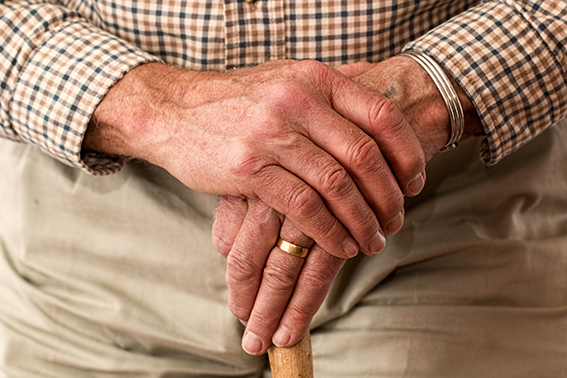In a bid to provide decent care services for senior citizens, the Health Ministry’s Nursing Department has established a Gerontology Nursing Committee.
Gerontological nursing, formerly referred to as geriatric nursing, is the specialty of nursing pertaining to older people. Gerontological nurses work in collaboration with older adults, their families, and communities to support healthy aging, maximum functioning, and quality of life.
Due to longer life expectancy and declining fertility rates, the proportion of the elderly population has grown and continues to increase in most countries, including Iran. This has created the need to improve care services to maintain the quality of life for senior citizens.
Currently, people over 60 make up 8.1% of the total population of 80 million in the country. The annual population growth rate for the general population is less than 1.5%, while the annual growth rate for those aged 60-65 is 6%.
At present, there are a few PhD holders in the field of gerontological nursing in Iran and 230 specialists have graduated or are studying at master’s level, and this number is grossly inadequate to meet the needs of the large elderly population, says Mohammad Mirzabeigi, deputy for nursing at the Health Ministry.
“Even if we start our education programs today, it would take several years to deliver,” said the official, addressing a conference on empowerment of gerontological nursing instructors.
However, following a directive issued by the Health Ministry’s Development Council, the newly-formed gerontological committee will design intensive nursing courses in collaboration with PhD and master’s degree holders in the field to train and supply sufficient expert staff in proportion to the number of elderly citizens, the ministry’s official news agency WEBDA reported.
Pointing to the introduction of gerontological nursing as a subject at the master’s level in around 20 universities since 2012, Mirzabeigi called on higher education institutions to consider the field more seriously and take steps to fulfill the requirements of present-day demographic change.
“The committee is also making efforts to update the curriculums of the subject at the post-graduate level,” he said, adding that a strategic plan for elderly care is also underway and will be outlined by a team of experts and university professors in the committee.
“It is essential that the nursing community learn to show deferential behavior towards the elderly and respect their dignity while taking care of them because today’s society owes their progress to the older generations,” said Mirzabeigi.
It would be desirable if the system could help seniors maintain their health and liveliness so they remain self-sufficient with a high morale, and independent of others’ assistance, he added.
Future Projections
It is estimated that by 2025, the percentage of the population 60+ will reach 12.3% and the percentage of those aged 65+ will reach 8.1% in Iran. The increasing number of elderly women in nursing homes is a matter of concern, says Farid Barati, head of the Secretariat of National Council of the Elderly (SNCE), at the State Welfare Organization.
Higher life expectancy and imbalance in gender ratio, with women’s population exceeding that of men, are reasons for the development. “The gender ratio was 100 women for 109 men at one time but now the figures are reversed with 100 women for 98 men,” he said.
In 2006, 7.3% of the population or 5.1 million people were elderly. A study carried out 5 years later, showed the figure had increased to 8.2% or 6.5 million elderly, with women accounting for 51%.
Iran will have approximately 15 million older people by 2025 and by 2041 the number could reach 20 million. If the number of elderly is 8% or more, it means the population is aging. In 10 years, it is expected that in every 10 Iranian families there will be 7 people who are 60 years or older.
Limited Facilities
Although most Iranian families prefer to take care of their elderly family members at their own homes, factors such as inadequate resources for homecare, especially in case of chronic diseases, and an increase in the demands of elderly care patients, forces families to shift them to nursing homes.
Elderly care centers in Iran, both public and private, are governed by the State Welfare Organization. Hospital facilities and specialists for elderly are limited. In Tehran with a population of 12 million, there are 64 care, housing and rehabilitation centers; one rehab and daycare training center; 10 rehabilitation and nursing homes; one comprehensive rehab center and four day care centers (SWO statistics, 2012).The number of nursing homes has not increased and provision of reasonable healthcare to the elderly has become a major concern.
Population aging is a result of decreasing mortality and increasing life expectancy, both positive development effects. However, it also brings along with it a set of economic, social and health-related challenges which has to be addressed.
This would mean developing and implementing an integrated national program/policy for the elderly – with particular focus on health issues, including preventive policies as the majority of health problems among elderly people are non-communicable and chronic diseases which require lengthy and costly healthcare


